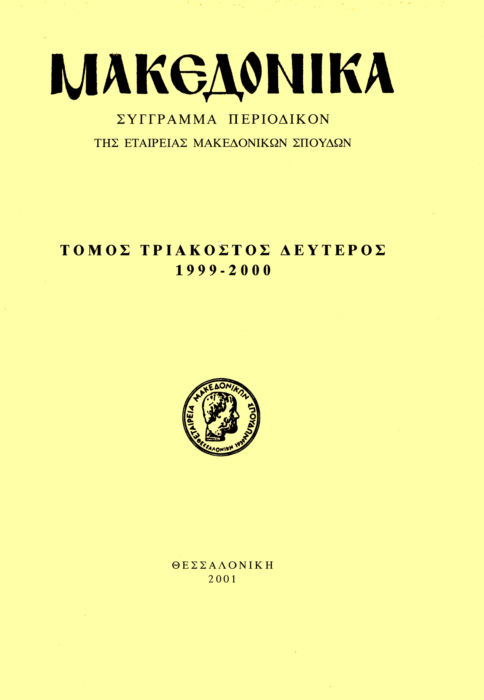Excavation of a prehistoric settlement of the late neolithic era and early iron age on St. Lydia’s hill, Asprovalta.
Abstract
The prehistoric settlement of St. Lydia lies on top of an isolated hill 155 m. high at the northern end of the Asprovalta plain. The section of the plain to the south-west of the hill has been formed by alluvial deposits with a high sand and gravel content, which means the soil is not particularly productive.
The exploratory excavation that was carried out in the summer of 1996 brought to light three construction phases, of which the two most recent ones (phase 3 and phase 2) date from the Early Iron Age, while the oldest one (phase 1) dates to the Late Neolithic Era. Two successive trenches, 4x4 m. in size, were excavated on the NE side of the plateau of the hill. In construction phase 3 the east wall of a building and the remains of two hearths were uncovered. A larger hearth that was uncovered to the east of the wall appears to have been situated in some external area of the house. The excavation of construction phase 2 revealed part of a wall which, on the basis of the ex cavation data, also appears to have formed part of the east wall of a house.
The pottery from the Early Iron Age is mainly coarse ware, while there is a smaller quantity of pots with polished interiors. Burnished black and red pots are very few in number.
The fill of construction phase 1 has been very largely destroyed by the Early Iron Age buildings. In this phase eight pits were uncovered which were probably used for storage purposes.
In all of the construction phases that were uncovered it was found that the construction of the buildings had been preceded by ground-flattening oper ations, which created a sequence of different levels.
Most of the Neolithic pottery consists of sherds of coarse ware (cat. 4). There are relatively high proportions of black burnished pots and pots of the black-on-red variety. Incised pots (cat. 13) are relatively few in number, and include pots with successive striations (cat. 20), pots with impressed decoration (cat. 21), and pots painted crimson on creamy yellow (cat. 30) or red on brown.
Amongst the small finds from phase 1 stand out a bronze fibula and a clay seal.
Article Details
- How to Cite
-
Γραμμένος Δ., & Κώτσος Σ. (2000). Excavation of a prehistoric settlement of the late neolithic era and early iron age on St. Lydia’s hill, Asprovalta. Makedonika, 32(1), 393–442. https://doi.org/10.12681/makedonika.178
- Issue
- Vol. 32
- Section
- Articles

This work is licensed under a Creative Commons Attribution-NonCommercial-ShareAlike 4.0 International License.
Authors who publish with this journal agree to the following terms:
- Authors retain copyright and grant the journal right of first publication with the work simultaneously licensed under a Creative Commons Attribution Non-Commercial License that allows others to share the work with an acknowledgement of the work's authorship and initial publication in this journal.
- Authors are able to enter into separate, additional contractual arrangements for the non-exclusive distribution of the journal's published version of the work (e.g. post it to an institutional repository or publish it in a book), with an acknowledgement of its initial publication in this journal.
- Authors are permitted and encouraged to post their work online (preferably in institutional repositories or on their website) prior to and during the submission process, as it can lead to productive exchanges, as well as earlier and greater citation of published work (See The Effect of Open Access).




